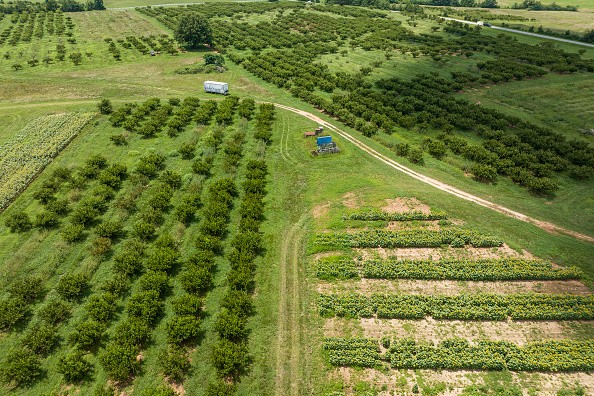Researchers have found that tropical trees use social distancing to maintain biodiversity. They discovered that adult trees in a Panamanian forest are three times as distant from other trees of the same species as expected.
This creates a mosaic of microhabitats that support a variety of other organisms.
The researchers used long-term data and computational modeling to reveal this mechanism, which is driven by species-specific enemies that prevent any one species from dominating the forest.
How do tropical trees avoid competition?

Tropical forests are known for their high diversity of tree species, often harboring hundreds of species in a square mile, as per Phys.org.
But how do these trees coexist without out-competing each other for resources?
A new study by researchers at The University of Texas at Austin has revealed a surprising answer: tropical trees use social distancing to maintain biodiversity.
The researchers used data from a forest research plot on Barro Colorado Island in Panama, where every tree has been mapped and monitored for the past 100 years.
They combined computational modeling with data collected during a 30-year period and discovered that adult trees in the forest are three times as distant from other adults of the same species.
This means that each tree is surrounded by a diverse mix of other species, rather than by its own kind.
Why do tropical trees distance themselves?
The researchers found that the main reason for the spatial distancing of tropical trees is the presence of species-specific enemies, such as fungi or insects, that target and harm each tree species more than others.
These enemies create a negative feedback loop that prevents any one species from dominating the forest and allows other species to establish around each tree.
This mechanism is similar to the Janzen-Connell hypothesis, which proposes that seedlings are more likely to survive away from their parents because they escape the high density of enemies near them.
The new study extends this idea to adult trees and shows that they also avoid clustering with their own kind to reduce the risk of infection or herbivory.
What are the implications of tropical tree distancing?
The study provided new insights into how tropical forests maintain their diversity and resilience in the face of environmental changes, as per ScienceDaily.
By distancing themselves from their conspecifics, tropical trees create a mosaic of microhabitats that support a variety of other organisms, such as birds, mammals, reptiles and insects.
These microhabitats also increase the functional diversity of the forest, meaning that different species perform different roles and services, such as pollination, seed dispersal or nutrient cycling.
The study also highlights the importance of long-term data collection and computational modeling to understand the complex dynamics of tropical forests.
The researchers used data from the Smithsonian Tropical Research Institute's Forest Global Earth Observatory (ForestGEO), which monitors more than 60 forest plots around the world.
The ForestGEO network provides a unique opportunity to compare and contrast different forest types and regions and to detect global patterns and trends.
The study also suggests that tropical forests may be more vulnerable to human disturbances, such as logging, hunting or climate change, that disrupt the natural patterns of tree distribution and diversity.
The researchers warned that losing any tree species could have cascading effects on the whole forest ecosystem, affecting not only other plants but also animals and humans that depend on them.
© 2025 NatureWorldNews.com All rights reserved. Do not reproduce without permission.





